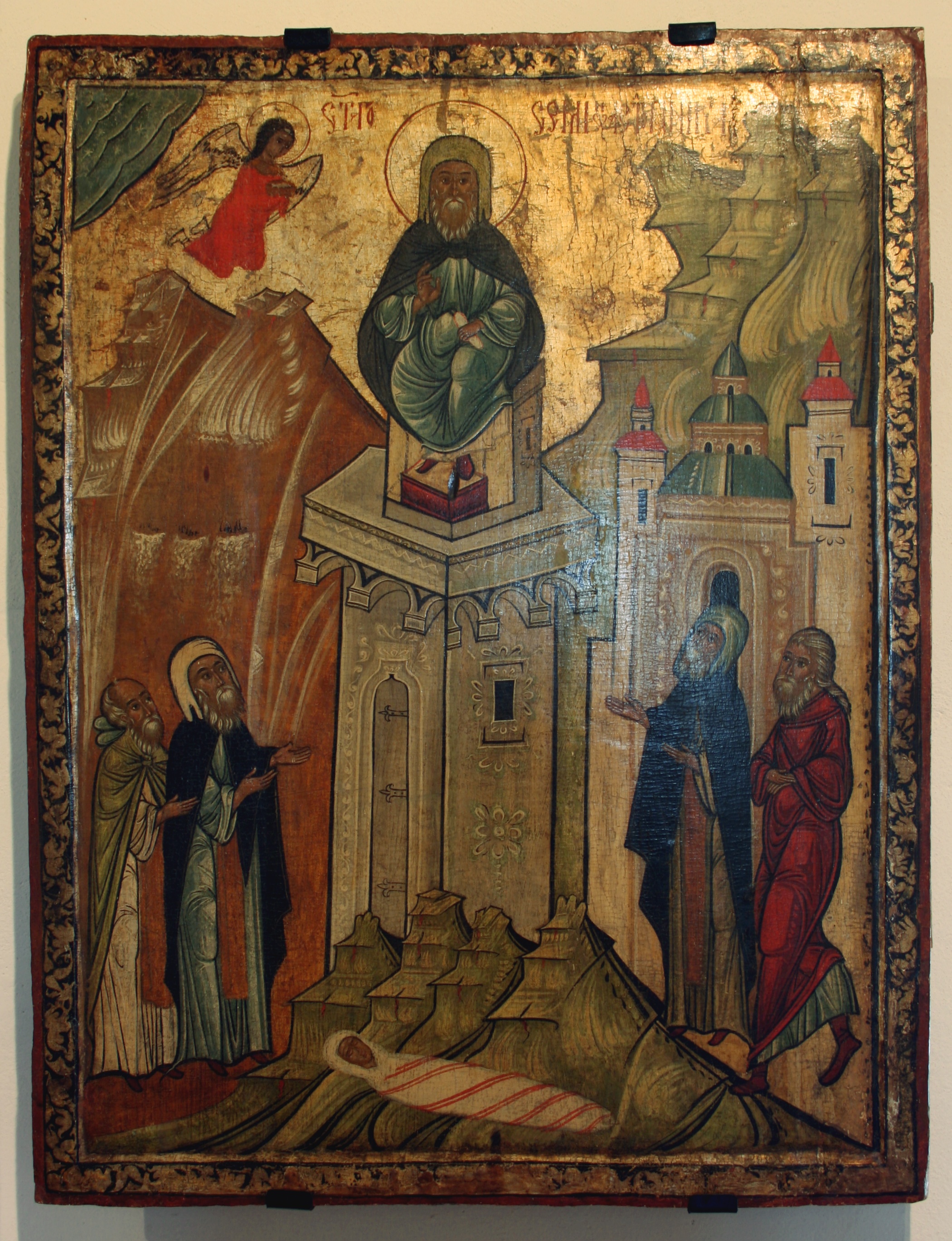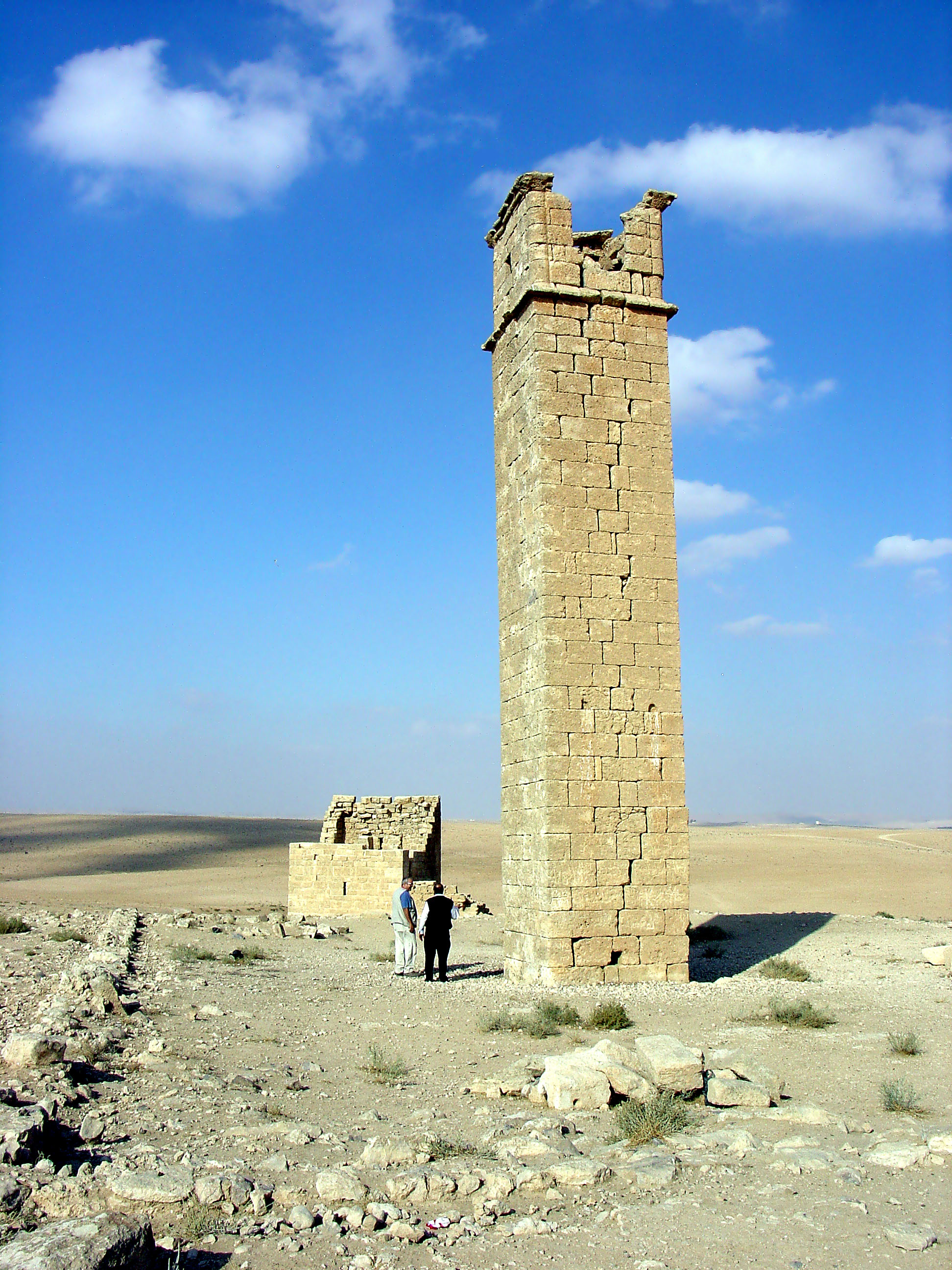|
Simeon Stylites III
Simeon Stylites III was a pillar hermit bearing the same name as Simeon Stylites and Simeon Stylites the Younger. He is honoured by both the Greek Orthodox Church and the Coptic Church. He is hence believed to have lived in the fifth century before the breach which occurred between these Churches. However, very little certain is known of him. He is believed to have been struck by lightning upon his pillar, built near Hegca in Cilicia Cilicia (); el, Κιλικία, ''Kilikía''; Middle Persian: ''klkyʾy'' (''Klikiyā''); Parthian language, Parthian: ''kylkyʾ'' (''Kilikiyā''); tr, Kilikya). is a geographical region in southern Anatolia in Turkey, extending inland from th .... Vol. 13. New York: Robert Apple ... [...More Info...] [...Related Items...] OR: [Wikipedia] [Google] [Baidu] |
Stylites
A stylite ( grc, στυλίτης () 'pillar dweller', derived from () 'pillar' and syc, ܐܣܛܘܢܐ ()) or pillar-saint is a type of Christian ascetic who lives on pillars, preaching, fasting and praying. Stylites believe that the mortification of their bodies would help ensure the salvation of their souls. Stylites were common in the early days of the Byzantine Empire. The first known stylite was Simeon Stylites the Elder who climbed a pillar in Syria in 423 and remained there until his death 37 years later. Ascetic precedents Palladius of Galatia tells of Epidius, a hermit in Palestine who dwelt in a mountaintop cave for twenty-five years until his death. St. Gregory of Nazianzus speaks of a solitary who stood upright for many years together, absorbed in contemplation, without ever lying down. Theodoret claimed that he had seen a hermit who had passed ten years in a tub suspended in midair from poles. [...More Info...] [...Related Items...] OR: [Wikipedia] [Google] [Baidu] |
Simeon Stylites
Simeon Stylites or Symeon the Stylite syc, ܫܡܥܘܢ ܕܐܣܛܘܢܐ ', Koine Greek ', ar, سمعان العمودي ' (c. 390 – 2 September 459) was a Syrian Christian ascetic, who achieved notability by living 37 years on a small platform on top of a pillar near Aleppo (in modern Syria). Several other stylites later followed his model (the Greek word ''style'' means "pillar"). Simeon is venerated as a saint by the Oriental Orthodox, Eastern Orthodox, and Roman Catholic Churches. He is known formally as Simeon Stylites the Elder to distinguish him from Simeon Stylites the Younger, Simeon Stylites III, and Symeon Stylites of Lesbos. Sources There exist three major early biographies of Simeon. The first of these is by Theodoret, bishop of Cyrrhus, and is found within his work ''Religious History''. This biography was written during Simeon's lifetime, and Theodoret relates several events of which he claims to be an eyewitness. The narrator of a second biograp ... [...More Info...] [...Related Items...] OR: [Wikipedia] [Google] [Baidu] |
Simeon Stylites The Younger
Saint Simeon Stylites the Younger, also known as Simeon of the Admirable Mountain ( el, Συμεὼν ὁ νεώτερος ὁ στυλίτης, Arabic: مار سمعان العمودي الأصغر ''mār semʻān l-ʻamūdī l-asghar'') (521 – 596/597), is a saint in the Eastern Orthodox Church and Catholic Churches of Eastern and Latin Rites. Life Stylites were solitaries who, taking up their abode upon the tops of a pillar (stylos), chose to spend their days amid the restraints thus entailed and in the exercise of other forms of asceticism.Thurston, Herbert. "Stylites (Pillar Saints)." The Catholic Encyclopedia Vol. 14. New York: Robert Appleton Company, 1912. 9 December 2021 Simeon was born at |
Greek Orthodox Church
The term Greek Orthodox Church (Greek: Ἑλληνορθόδοξη Ἐκκλησία, ''Ellinorthódoxi Ekklisía'', ) has two meanings. The broader meaning designates "the entire body of Orthodox (Chalcedonian) Christianity, sometimes also called 'Eastern Orthodox,' 'Greek Catholic,' or generally 'the Greek Church. The narrower meaning designates "any of several independent churches within the worldwide communion of asternOrthodox Christianity that retain the use of the Greek language in formal ecclesiastical settings". Etymology Historically, the term "Greek Orthodox" has been used to describe all Eastern Orthodox churches, since the term "Greek" can refer to the heritage of the Byzantine Empire. During the first eight centuries of Christian history, most major intellectual, cultural, and social developments in the Christian Church took place in the Byzantine Empire or its sphere of influence, where the Greek language was widely spoken and used for most theological writi ... [...More Info...] [...Related Items...] OR: [Wikipedia] [Google] [Baidu] |
Coptic Orthodox Church Of Alexandria
The Coptic Orthodox Church ( cop, Ϯⲉⲕ̀ⲕⲗⲏⲥⲓⲁ ⲛ̀ⲣⲉⲙⲛ̀ⲭⲏⲙⲓ ⲛ̀ⲟⲣⲑⲟⲇⲟⲝⲟⲥ, translit=Ti.eklyseya en.remenkimi en.orthodoxos, lit=the Egyptian Orthodox Church; ar, الكنيسة القبطية الأرثوذكسية, translit=al-Kanīsa al-Qibṭiyya al-ʾUrṯūḏuksiyya), also known as the Coptic Orthodox Patriarchate of Alexandria, is an Oriental Orthodox Christian church based in Egypt, servicing Africa and the Middle East. The head of the church and the See of Alexandria is the Pope of Alexandria on the Holy Apostolic See of Saint Mark, who also carries the title of Father of fathers, Shepherd of Shepherds, Ecumenical Judge and the thirteenth among the Apostles. The See of Alexandria is titular, and today, the Coptic Pope presides from Saint Mark's Coptic Orthodox Cathedral in the Abbassia District in Cairo. The church follows the Coptic Rite for its liturgy, prayer and devotional patrimony. The church has approxim ... [...More Info...] [...Related Items...] OR: [Wikipedia] [Google] [Baidu] |
Cilicia
Cilicia (); el, Κιλικία, ''Kilikía''; Middle Persian: ''klkyʾy'' (''Klikiyā''); Parthian language, Parthian: ''kylkyʾ'' (''Kilikiyā''); tr, Kilikya). is a geographical region in southern Anatolia in Turkey, extending inland from the northeastern coasts of the Mediterranean Sea. Cilicia has a population ranging over six million, concentrated mostly at the Cilicia plain. The region includes the provinces of Mersin Province, Mersin, Adana Province, Adana, Osmaniye Province, Osmaniye, along with parts of Hatay Province, Hatay and Antalya Province, Antalya. Geography Cilicia is extended along the Mediterranean Sea, Mediterranean coast east from Pamphylia to the Nur Mountains, which separates it from Syria. North and east of Cilicia lie the rugged Taurus Mountains that separate it from the high central plateau of Anatolia, which are pierced by a narrow gorge called in antiquity the Cilician Gates. Ancient Cilicia was naturally divided into Cilicia Trachea and Cilicia Pedi ... [...More Info...] [...Related Items...] OR: [Wikipedia] [Google] [Baidu] |
Year Of Birth Missing
A year or annus is the orbital period of a planetary body, for example, the Earth, moving in its orbit around the Sun. Due to the Earth's axial tilt, the course of a year sees the passing of the seasons, marked by change in weather, the hours of daylight, and, consequently, vegetation and soil fertility. In temperate and subpolar regions around the planet, four seasons are generally recognized: spring, summer, autumn and winter. In tropical and subtropical regions, several geographical sectors do not present defined seasons; but in the seasonal tropics, the annual wet and dry seasons are recognized and tracked. A calendar year is an approximation of the number of days of the Earth's orbital period, as counted in a given calendar. The Gregorian calendar, or modern calendar, presents its calendar year to be either a common year of 365 days or a leap year of 366 days, as do the Julian calendars. For the Gregorian calendar, the average length of the calendar ye ... [...More Info...] [...Related Items...] OR: [Wikipedia] [Google] [Baidu] |
Syrian Christian Saints
Syrians ( ar, سُورِيُّون, ''Sūriyyīn'') are an Eastern Mediterranean ethnic group indigenous to the Levant. They share common Levantine Semitic roots. The cultural and linguistic heritage of the Syrian people is a blend of both indigenous elements and the foreign cultures that have come to inhabit the region of Syria over the course of thousands of years. The mother tongue of most Syrians is Levantine Arabic, which came to replace the former mother tongue, Aramaic, following the Muslim conquest of the Levant in the 7th century. The conquest led to the establishment of the Caliphate under successive Arab dynasties, who, during the period of the later Abbasid Caliphate, promoted the use of the Arabic language. A minority of Syrians have retained Aramaic which is still spoken in its Eastern and Western dialects. In 2018, the Syrian Arab Republic had an estimated population of 19.5 million, which includes, aside from the aforementioned majority, ethnic minorities such as ... [...More Info...] [...Related Items...] OR: [Wikipedia] [Google] [Baidu] |
Stylites
A stylite ( grc, στυλίτης () 'pillar dweller', derived from () 'pillar' and syc, ܐܣܛܘܢܐ ()) or pillar-saint is a type of Christian ascetic who lives on pillars, preaching, fasting and praying. Stylites believe that the mortification of their bodies would help ensure the salvation of their souls. Stylites were common in the early days of the Byzantine Empire. The first known stylite was Simeon Stylites the Elder who climbed a pillar in Syria in 423 and remained there until his death 37 years later. Ascetic precedents Palladius of Galatia tells of Epidius, a hermit in Palestine who dwelt in a mountaintop cave for twenty-five years until his death. St. Gregory of Nazianzus speaks of a solitary who stood upright for many years together, absorbed in contemplation, without ever lying down. Theodoret claimed that he had seen a hermit who had passed ten years in a tub suspended in midair from poles. [...More Info...] [...Related Items...] OR: [Wikipedia] [Google] [Baidu] |





